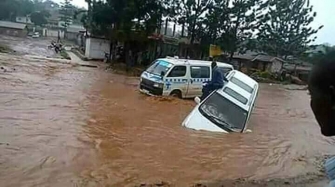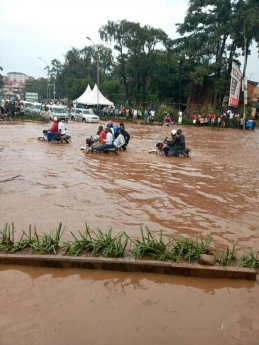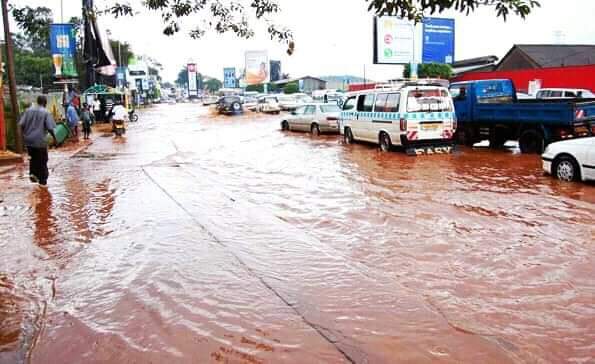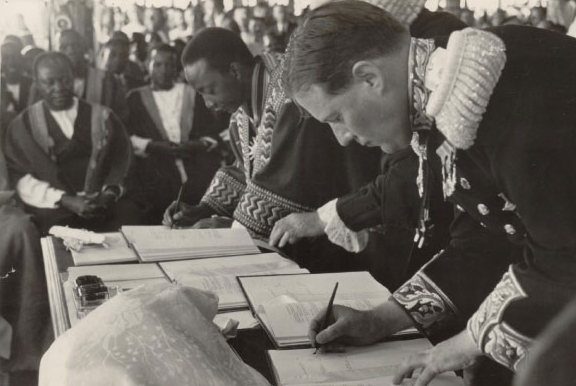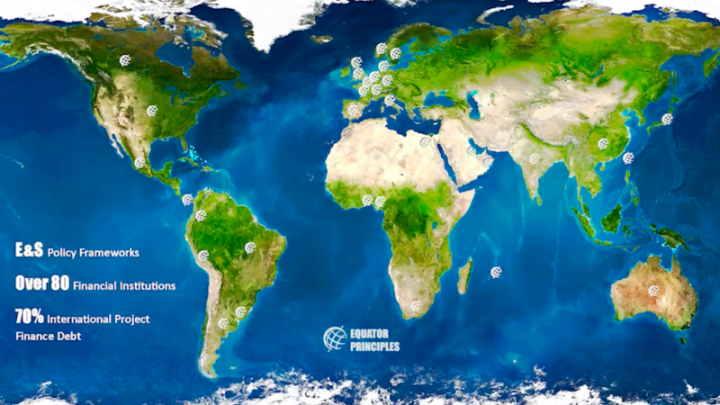
Not so long ago, a birthday passed with little notice. The Equator Principles turned 15. Not many celebrated, but we should have. The principles require participating banks to apply a minimum of standards to reduce environmental and social risks in their project finance operations. Today, 94 banks in 37 countries adhere to the Equator Principles, covering more than 80 percent of project finance transactions in emerging markets.
History helps to understand why that’s important.
Two decades ago, commercial banks did not pay much attention to the environmental and social risks associated with lending. It simply wasn’t a priority. When it came to financing projects, bankers were generally trained to focus on financial returns and credit risks and not much on the welfare of communities. That approach opened them up to criticism that their lending could do more harm than good. This problem was particularly acute in emerging markets where environmental and social regulation and enforcement were limited. There were protests and disruptions to major mining and oil pipeline projects in developing countries and calls for boycotts of the financing banks.
More reading:
► World Bank to quit upstream oil and gas projects after 2019
► In Bangkok, climate campaigners warn against the private sector 'silver bullet'
My organization, the International Finance Corporation, wasn’t immune. One notable case involved criticism for our financing of a hydroproject in Chile in the mid-1990s because of inadequate assessment of potential impacts on indigenous peoples and the environment.
We learned from this humbling experience, and strengthened our environmental and social review procedures, public disclosure, and accountability to better serve communities and the environment. That process continues — as we learn, we strengthen and refine our standards.
During this volatile period nearly two decades ago, banks acted, too.
In 2002, IFC and ABN AMRO — a Netherlands-based bank — called a meeting in London for leading project finance bankers. An idea emerged for a new industry-wide framework to manage environmental and social risks in project lending, based on the lessons from IFC’s performance standards. This common approach could help reduce risks related to sustainability, deal structuring, project completion, credit, and the banks’ reputations.
A year later, on June 4, 2003, ABN AMRO and nine other banks, including Barclays and Citigroup, announced that they were adopting the Equator Principles. They deliberately chose the name to reflect the initiative’s global ambitions to include developed and emerging market countries. Bankers were breaking new ground: They assumed leadership roles to advance sustainable business practices by making them a requirement of their lending decisions.
In emerging markets, where regulations can be weaker, the principles required particularly robust action by their signatories, including application of IFC’s Performance Standards and the World Bank’s pollution prevention and abatement guidelines. As IFC continued to strengthen its own policies, updating them in 2006 and 2012, the bankers updated the Equator Principles as well, to stay in line with best global practice.
Over the past 15 years, the Equator Principles have improved labor standards and environmental practices, and strengthened engagement with indigenous peoples and local communities. In countries that had no standards or had poor enforcement of existing ones, the banks who followed the principles effectively set the local and national standards — relying on IFC’s experience and raising standards significantly in many countries.
Rapid adoption and expansion of the Equator Principles inspired others to follow suit. Many multilateral development institutions and 37 export credit agencies adopted similar approaches that also require application of IFC’s Performance Standards. IFC inspired and co-led other standards and commitments, including the United Nations’ Principles for Responsible Investment and the Carbon Disclosure Project.
Many regulators in emerging markets are working with IFC through the Sustainable Banking Network. This network brings together banking regulators and associations from 35 countries to transform their financial markets toward environmental and social sustainability in line with IFC’s Performance Standards and the Equator Principles. These regulators see this as critical to the stability of their domestic financial systems and a way to channel more financing toward sustainable development.
This banking network — that IFC helped create six years ago at the request of regulators and associations, and now acts as secretariat — helps emerging-markets countries develop policies and guidelines in line with international good practices on ESG standards and green finance. Earlier this year, the network released a report that measures the collective and individual progress across member countries.
This type of standard-setting has the potential for transformative impact. The green bond market is a good example. We helped shape and launch the Green Bond Principles four years ago, a set of voluntary guidelines that promote best practices for transparency and integrity to prevent “greenwashing” — or falsely claiming to help the environment. To help build a strong and credible green bond market, IFC’s own green bonds are aligned with these principles and we work with our clients to do the same. There’s even a working group within the Sustainable Banking Network to develop a robust regulatory structure for green bonds.
“IFC already uses carbon pricing in our own investment decisions. Governments and the private sector both need to incorporate a price on carbon to accurately reflect the true cost to society of the use of fossil fuels.”
— Philippe Le Houérou, CEO of IFCMoving forward, I see three major opportunities on the horizon to expand the reach of standards for responsible investment in emerging markets.
The first could happen in October. We’re hosting the Equator Principles Association in Washington, D.C., where discussions will focus on tightening standards on certain themes such as climate change and social impact. This could extend the scope of application beyond project finance to other aspects of bank lending that are much larger in financial terms.
The second opportunity will be discussed at our annual meetings in Indonesia in October: Whether asset owners and asset managers that hold $70 trillion can move toward a common set of standards for managing investments for impact. We will be presenting draft principles for further review with industry leaders, with a view to define and adopt such principles for “impact investing.”
And the third involves the promise of carbon pricing. IFC already uses carbon pricing in our own investment decisions. Governments and the private sector both need to incorporate a price on carbon to accurately reflect the true cost to society of the use of fossil fuels. A price on carbon also reduces the risks of stranded investments due to the global shift to protect our planet through the use of renewable energy sources.
We are engaged in all three initiatives to develop ambitious standards. The trend is clear. There’s a strong movement from within the private sector to support development that is good for communities and the planet. Fifteen years ago, a small group of banks took a courageous decision to create the Equator Principles. Today, others need to act courageously as well, and we stand ready to help. If these opportunities mentioned above become reality, we will have another reason to celebrate the Equator Principles.









